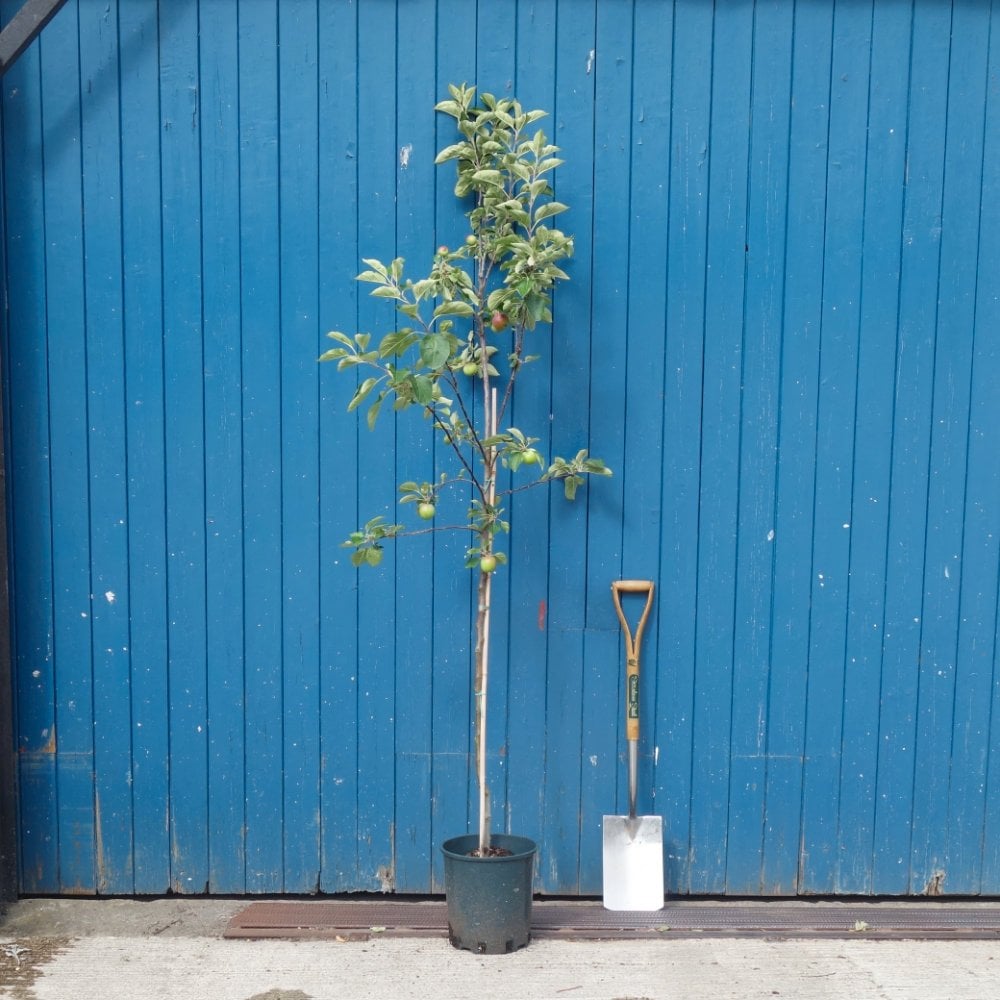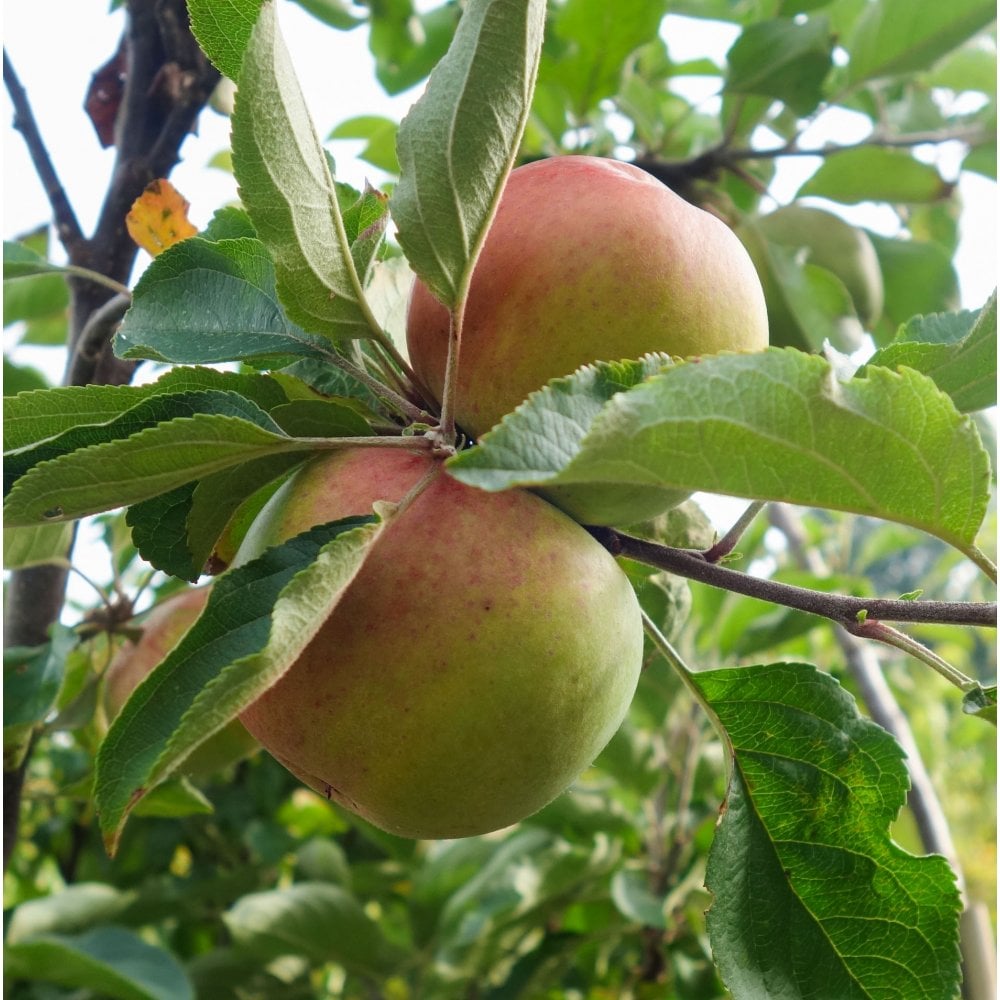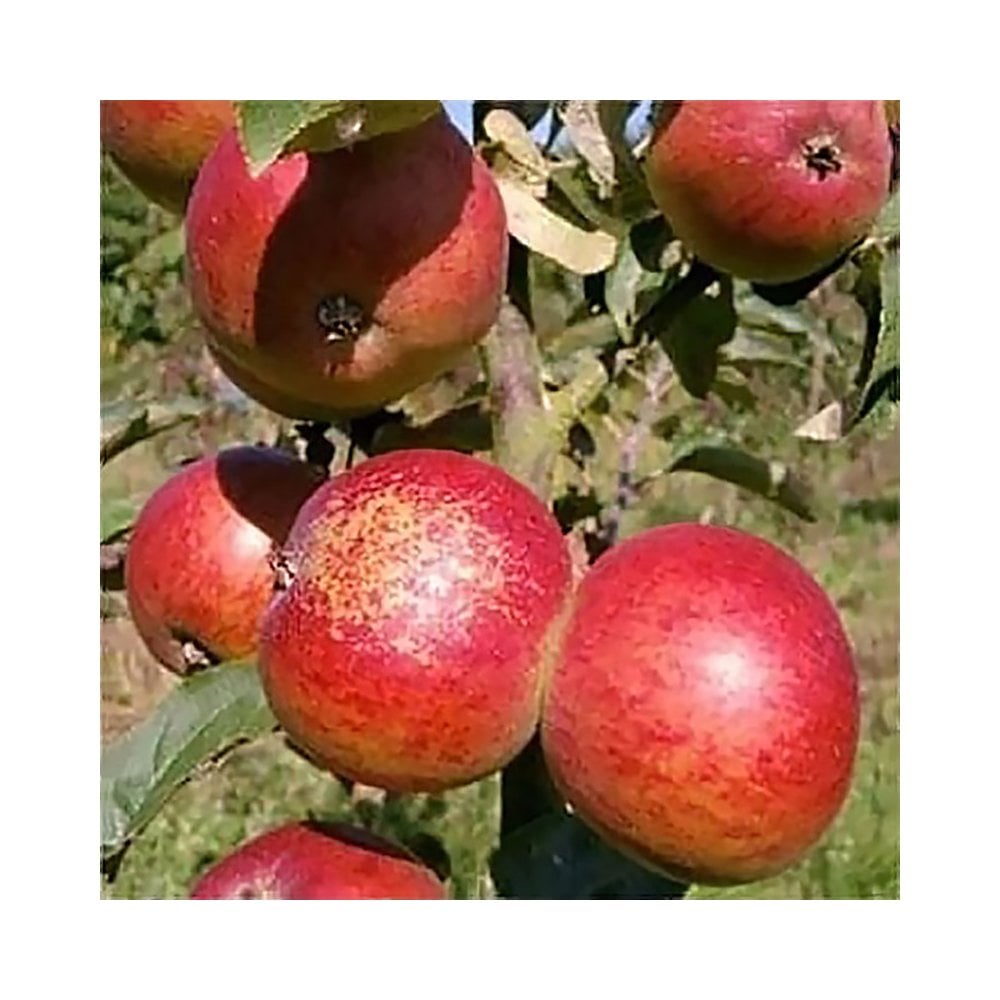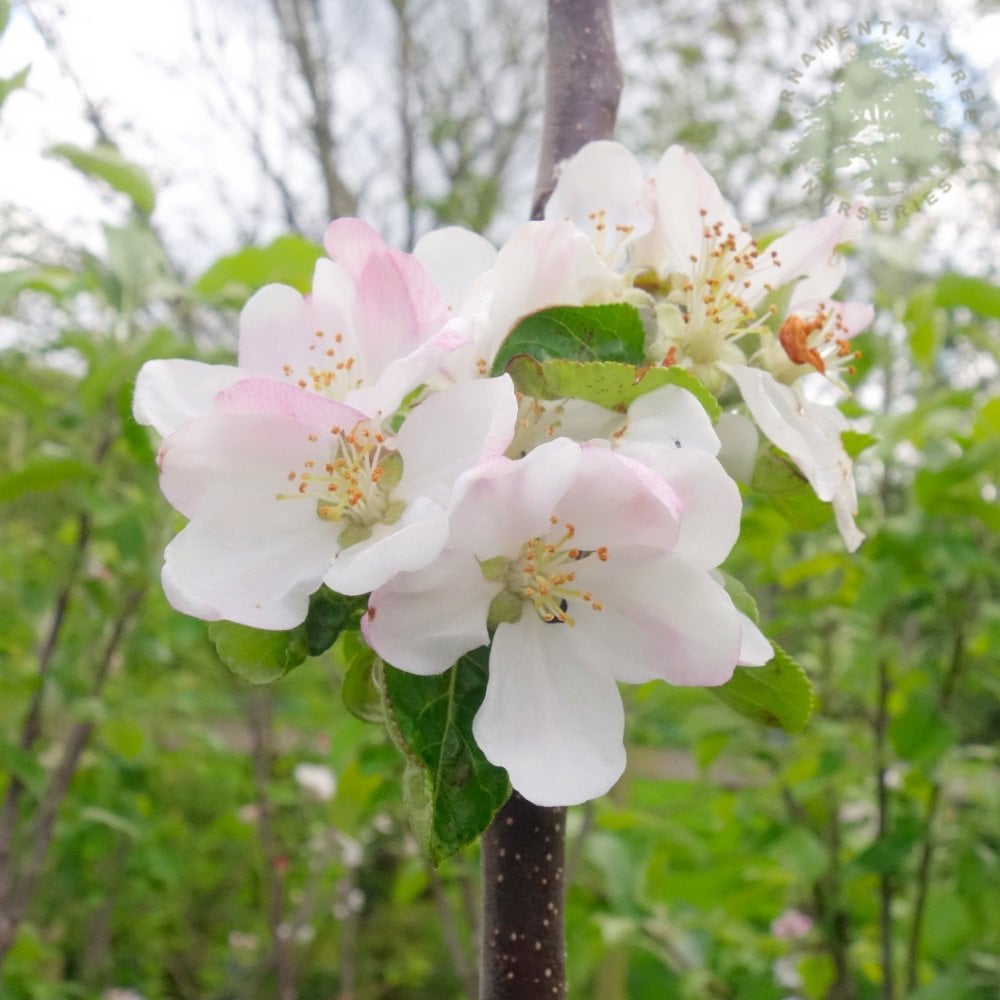Dabinett Apple Tree
Dabinett Apple Tree
Cider Apple Trees
Single stem tree, 150-200cm, MM106 (semi-vigorous), 12L pot
Despatched within 2-4 weeks




Key features




Description
Used in many cider apple orchards across the UK, Apple Dabinett is a traditional English variety that produces a delicious bittersweet cider. It has such a good flavour that many of the leading cider producers, such as Thatchers, make medium-dry ciders using just this apple alone. The dark scarlet and yellow apples can also be used to make a fine juice.
Dabinett apple trees are self fertile, so if you're planning a very-mini cider orchard you don't require more than one tree! The fruits can be picked in November. A truly vintage cider apple tree that comes strongly recommended.
Malus domestica 'Dabinett' apple trees originates from the UK around 1850.
| Small shrubs (1-3) | Young trees & 4+ small shrubs | Select semi-mature trees & shrubs (1-4) | All other mature trees (any quantity) | |
|---|---|---|---|---|
| Mainland UK ex. Scottish Highlands | £10 | £12 | £35 | from £55 |
| Scottish Highlands & the Islands | From £30 | |||
| Outside Mainland UK | Currently we are unable to deliver outside of Mainland UK | |||
Product Details
Key features




Description
Used in many cider apple orchards across the UK, Apple Dabinett is a traditional English variety that produces a delicious bittersweet cider. It has such a good flavour that many of the leading cider producers,...
Used in many cider apple orchards across the UK, Apple Dabinett is a traditional English variety that produces a delicious bittersweet cider. It has such a good flavour that many of the leading cider producers, such as Thatchers, make medium-dry ciders using just this apple alone. The dark scarlet and yellow apples can also be used to make a fine juice.
Dabinett apple trees are self fertile, so if you're planning a very-mini cider orchard you don't require more than one tree! The fruits can be picked in November. A truly vintage cider apple tree that comes strongly recommended.
Malus domestica 'Dabinett' apple trees originates from the UK around 1850.
Planting & Care
Delivery Information
| Small shrubs (1-3) | Young trees & 4+ small shrubs | Select semi-mature trees & shrubs (1-4) | All other mature trees (any quantity) | |
|---|---|---|---|---|
| Mainland UK ex. Scottish Highlands | £10 | £12 | £35 | from £55 |
| Scottish Highlands & the Islands | From £30 | |||
| Outside Mainland UK | Currently we are unable to deliver outside of Mainland UK | |||
MORE TO GROW YOUR GARDEN



















